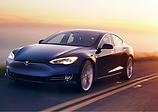After years of delays, Amtrak’s NextGen Acela trains finally made their debut this week, ushering in what the rail service hopes will be the next era of American high-speed rail. Branded as “America’s only high-speed rail service,” the new fleet will run the busy Northeast Corridor route between Washington, D.C., and Boston, topping out at 160 mph.
The new Acela trains are an upgrade from the current generation, which first launched at the turn of the millennium and reaches a maximum speed of 150 mph. Since then, more than 69 million passengers have traveled on Acela trains, and in fiscal year 2024 alone, the service generated nearly $530 million in ticket revenue across more than 3 million trips.
The new trains, built by French manufacturer Alstom, are designed to carry 27% more passengers while offering a noticeably sleeker experience. Upgrades include:
- Faster Wi-Fi powered by 5G, with speeds clocked at over 100 Mbps, though there are still dead zones along the route.
- More comfortable seating, with wider first-class seats in a 1-2 layout and 2-2 business class seating.
- Touchless lavatories, a tilt system for smoother rides, and high-definition information screens throughout the cabins.
- A new Café Acela, featuring grab-and-go fridges, self-checkout kiosks, and hot food at the counter, speeding up onboard service.
First-class passengers also get extendable tray tables, leg rests, and a quieter environment better suited for long-haul work or relaxation. Business class, which makes up the bulk of the train, balances space and affordability, though the seats have a quirky forward-slide recline.
Originally set to launch in 2022, the NextGen Acela project faced multiple delays due to technical, financial, and leadership challenges. Amtrak, which has operated at a loss for years, reported $3.6 billion in revenue in 2024 compared with $8.8 billion in operating and capital expenses.
Even now, the rollout is gradual. Only five new trains will operate initially, with Amtrak planning to deploy all 28 by 2027. When booking, travelers can look for the “NextGen” label in the Amtrak app to confirm they’re riding the new equipment.
Amtrak’s push to modernize comes as the U.S. continues to lag behind global high-speed rail leaders. While Japan’s bullet trains hit 200 mph and European networks routinely exceed Acela’s speeds, America’s infrastructure limits the corridor to lower top speeds, passengers will rarely see the full 160 mph in practice.
Other U.S. high-speed rail efforts haven’t fared much better. California’s bullet train plan between Los Angeles and San Francisco has been trimmed down repeatedly, with federal funding recently pulled and lawsuits now pending. Meanwhile, Florida’s private Brightline trains have managed to attract riders at 125 mph, but mounting debt leaves its future uncertain.




